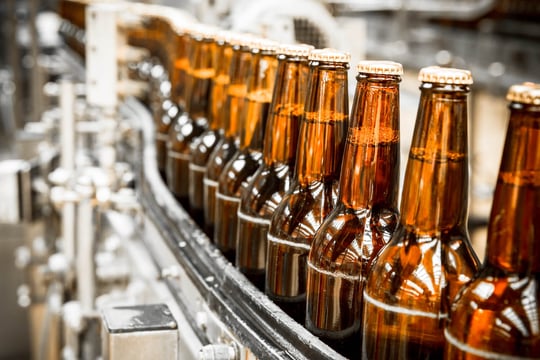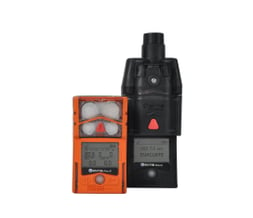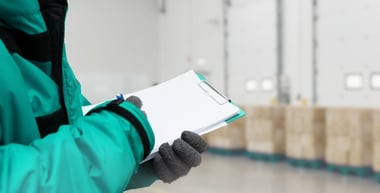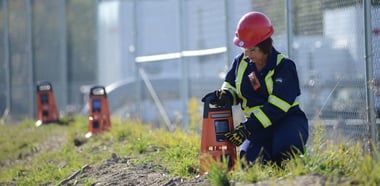In the food and beverage industry, there’s a general lack of awareness about gas detection and gas safety.
Carbon dioxide, a colorless and odorless gas, is perhaps the most common gas used by food and beverage companies, but it is hardly the only gas to worry about.
Ammonia (NH3), one of the most widely-available chemicals in the world, is the preferred choice for industrial refrigeration, flash freezing, and bulk storage due to its superior cooling capabilities and low cost.
Despite ammonia being so common as a refrigerant, most food and beverage facilities don’t have the protocols or equipment they need to protect workers if there is a leak. Ammonia is toxic, even at low levels, and people need to wear personal protective equipment when working with it.
To stay safe, you need to understand the risks of ammonia exposure as well as the gas detection equipment you need to detect this invisible gas hazard.

THE RISK OF AMMONIA REFRIGERATION SYSTEMS
Even with routine maintenance and preventative measures, refrigerant leaks can and will happen. In larger facilities, most leaks will occur in the room containing the refrigeration compressors. General wear and tear can cause Schrader caps, thread sealants, neoprene o-rings, and other refrigeration parts to leak.
When used in refrigeration, ammonia is converted into a liquid known as anhydrous ammonia. During a leak, this liquid quickly returns a gaseous form that’s toxic to those who breathe it in.
Despite being colorless, ammonia has a strong and pungent odor that most people can smell. But this does NOT mean that you can rely on smell to detect ammonia. Studies have shown that the threshold at which we can smell ammonia varies greatly, and in some cases, ammonia can reach harmful concentrations before a human can detect it.
Ammonia is measured in parts per million (PPM) just like any other gas. As the concentration increases, ammonia becomes more harmful. Ammonia can be lethal and even explosive at high concentrations.
- 0-25 PPM: Eyes become irritated, breathing can be difficult.
- 25 PPM: Permissible Exposure Limit (OSHA).
- 50-100 PPM: Swelling of the eyelids, conjunctivitis, vomiting, irritation of the throat.
- 100-500 PPM: Concentrations are dangerously high, irritation becomes more intense. Death can result from highly concentrated, prolonged exposure.
REDUCE RISKS WITH GAS DETECTION EQUIPMENT
If your food and beverage company uses ammonia for refrigeration, flash freezing, or bulk storage, you need to use portable or area gas monitors to identify this gas hazard.
Personal multi-gas monitors, like the Ventis Pro5, are flexible gas detectors that workers can wear to detect ammonia no matter where they go. These monitors also share real-time gas readings, man-down, and panic alarms with other gas detectors and live monitoring software. This alarm sharing provides additional visibility and serves as a safeguard to that someone always knows when another worker encounters dangerous conditions.
to detect ammonia no matter where they go. These monitors also share real-time gas readings, man-down, and panic alarms with other gas detectors and live monitoring software. This alarm sharing provides additional visibility and serves as a safeguard to that someone always knows when another worker encounters dangerous conditions.
If you have a large room with a refrigeration system, you should also use an area monitor. With gas leaks, it’s best to know what’s happening at a distance and area monitors make this possible. Area monitors, like the Radius BZ1, should be placed anywhere gas hazards may be present. The area monitor can alert you to ammonia that you otherwise wouldn’t detect until a worker entered the room while wearing a personal gas detector. Area monitors can also share ammonia readings with portable monitors so workers nearby know when and where there’s an ammonia leak and they need to don additional PPE before approaching the area.
Ammonia can cause health issues at low concentrations and can be flammable, explosive, and deadly at high concentrations, you need to take leaks seriously. Keep your workers, your inventory, and your business safe by building a gas detection program that will identify ammonia leaks before they leave you out in the cold.
Talk to our gas detection experts to find the right ammonia gas detector for your application.



